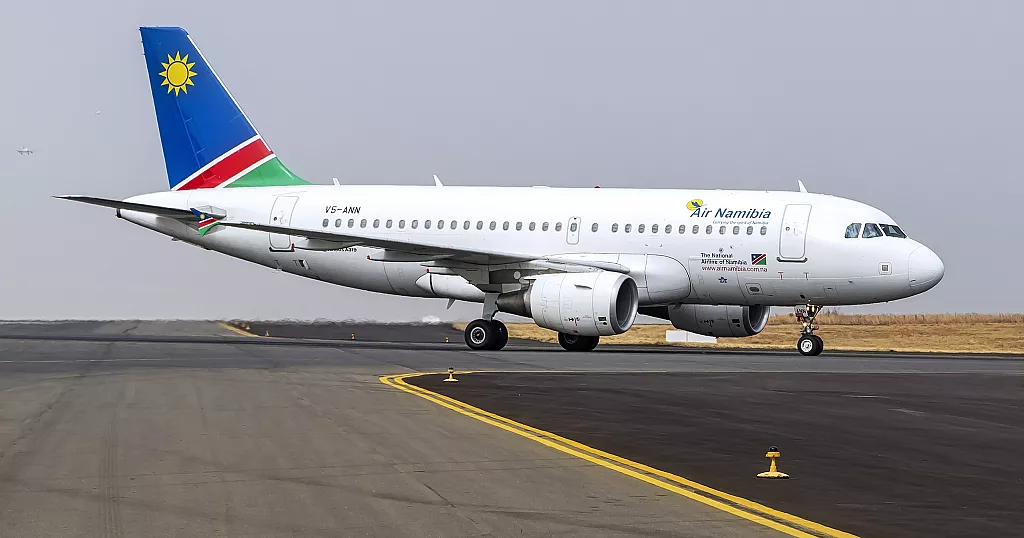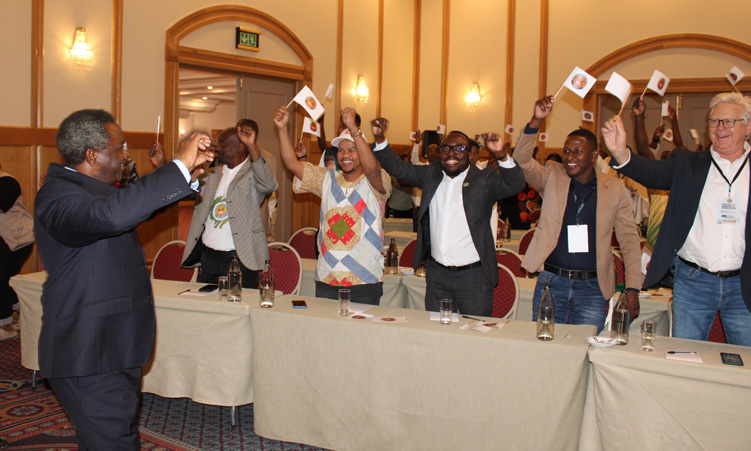KEFRAYA – In the early October sunshine warming Lebanon’s Bekaa Valley, labourers snip deep purple grapes from the vines of Chateau Kefraya to complete what wine-maker Michel de Bustros reckons is a promising harvest.
Last year, there very nearly wasn’t one. War raged between Israel and Hezbollah guerrillas for nearly five weeks until mid-August, threatening the picking season.”It stopped just in time,” said Michel Faky, a manager at Kefraya, as he drove up a track to the 300-hectare vineyard’s highest point at 1 100 metres on the eastern slopes of Mount Lebanon.”Any longer and it would have been catastrophic.”This year there was no Israeli bombing to scare away the Kurdish and Bedouin workers who come each year from neighbouring Syria to pick Kefraya’s grapes for about US$10 a day.About 30 men, women and youngsters in worn but colourful clothes crouch among the green leaves tinged with autumn gold, filling boxes with juicy clusters to empty onto a trailer.Used to coping with violence and instability, Kefraya has grown into Lebanon’s second-biggest wine producer since de Bustros sold his first bottles in 1979, four years into a decade and a half of civil wars and invasions.”I don’t know if at that time it was wise to start.It seems wise now,” the sprightly 78-year-old smiled as he watched grapes slide from the trailer into a churning press.”Not many people were starting any sort of business.It was really adventurous.”Kefraya produces about two million bottles of wine a year, a bit less than Ksara, further north in the Bekaa, where Jesuits began making Lebanon’s first commercial wine 150 years ago.Lebanon is a relatively small wine producer – Kefraya and Ksara together account for about 65 per cent of total output.But the industry can trace its roots at least 4 000 years back to when the Phoenicians sold wine around the Mediterranean.A temple built for Bacchus, the Roman wine god, still stands in Baalbek, now a mainly Shi’ite Muslim town loyal to Hezbollah.HOUSE RULES In Kefraya, de Bustros banishes talk of religion or politics among the winery’s Christian and Muslim employees: “Everybody is used to this now and we have never had any problem with people fighting together over their political or religious opinions.”The seasonal grape-pickers are Muslims, but some admit to breaking their religion’s prohibition on alcohol.”I like red wine,” giggled Rabia Moussa, a round-faced woman of 24, wearing a red T-shirt and a straw hat over a headscarf.Suleiman Shammas, the weatherbeaten foreman directing the work gang with a megaphone, is also fond of a tipple, but abstains during the Muslim fasting month of Ramadan.”I don’t fast, but I give up drinking,” he confided.If the passions of politics and the strictures of religion seem diluted in this tranquil corner of Lebanon, it is perhaps because de Bustros has stamped his own mark on a place that his staff say he runs more like a father than a boss.Sitting in the chateau garden, the white-haired businessman said: “Wine cannot be produced in an ugly environment.Good wine in an ugly bottle wouldn’t be the same.”That’s why he has planted gardens, with lawns and feathery clumps of pampas grass, named after opera composers around the winery.That’s also why he cleans the roads running past the estate and lines them with orange-blossomed picaranta shrubs.Ten years ago, de Bustros sold shares in Kefraya to outside investors – Druze politician Walid Jumblatt holds a majority stake – but his own tastes and whims still infuse everything.He commissions Lebanese women painters for the pictures that appear on his red wine labels each year.White wine vintages are named after women opera characters chosen alphabetically.”Art and wine, all sorts of art, are really linked,” de Bustros said.”Blending grapes is an art.A mono-varietal is not an art – you just make the wine, fill it in bottles and that’s all, you didn’t give something to it from your soul.”Kefraya’s 32-year-old French wine expert, Fabrice Guibertau, shares something of his employer’s philosophy.Nampa-ReutersWar raged between Israel and Hezbollah guerrillas for nearly five weeks until mid-August, threatening the picking season.”It stopped just in time,” said Michel Faky, a manager at Kefraya, as he drove up a track to the 300-hectare vineyard’s highest point at 1 100 metres on the eastern slopes of Mount Lebanon.”Any longer and it would have been catastrophic.”This year there was no Israeli bombing to scare away the Kurdish and Bedouin workers who come each year from neighbouring Syria to pick Kefraya’s grapes for about US$10 a day.About 30 men, women and youngsters in worn but colourful clothes crouch among the green leaves tinged with autumn gold, filling boxes with juicy clusters to empty onto a trailer.Used to coping with violence and instability, Kefraya has grown into Lebanon’s second-biggest wine producer since de Bustros sold his first bottles in 1979, four years into a decade and a half of civil wars and invasions.”I don’t know if at that time it was wise to start.It seems wise now,” the sprightly 78-year-old smiled as he watched grapes slide from the trailer into a churning press.”Not many people were starting any sort of business.It was really adventurous.”Kefraya produces about two million bottles of wine a year, a bit less than Ksara, further north in the Bekaa, where Jesuits began making Lebanon’s first commercial wine 150 years ago.Lebanon is a relatively small wine producer – Kefraya and Ksara together account for about 65 per cent of total output.But the industry can trace its roots at least 4 000 years back to when the Phoenicians sold wine around the Mediterranean.A temple built for Bacchus, the Roman wine god, still stands in Baalbek, now a mainly Shi’ite Muslim town loyal to Hezbollah.HOUSE RULES In Kefraya, de Bustros banishes talk of religion or politics among the winery’s Christian and Muslim employees: “Everybody is used to this now and we have never had any problem with people fighting together over their political or religious opinions.”The seasonal grape-pickers are Muslims, but some admit to breaking their religion’s prohibition on alcohol.”I like red wine,” giggled Rabia Moussa, a round-faced woman of 24, wearing a red T-shirt and a straw hat over a headscarf.Suleiman Shammas, the weatherbeaten foreman directing the work gang with a megaphone, is also fond of a tipple, but abstains during the Muslim fasting month of Ramadan.”I don’t fast, but I give up drinking,” he confided.If the passions of politics and the strictures of religion seem diluted in this tranquil corner of Lebanon, it is perhaps because de Bustros has stamped his own mark on a place that his staff say he runs more like a father than a boss.Sitting in the chateau garden, the white-haired businessman said: “Wine cannot be produced in an ugly environment.Good wine in an ugly bottle wouldn’t be the same.”That’s why he has planted gardens, with lawns and feathery clumps of pampas grass, named after opera composers around the winery.That’s also why he cleans the roads running past the estate and lines them with orange-blossomed picaranta shrubs.Ten years ago, de Bustros sold shares in Kefraya to outside investors – Druze politician Walid Jumblatt holds a majority stake – but his own tastes and whims still infuse everything.He commissions Lebanese women painters for the pictures that appear on his red wine labels each year.White wine vintages are named after women opera characters chosen alphabetically.”Art and wine, all sorts of art, are really linked,” de Bustros said.”Blending grapes is an art.A mono-varietal is not an art – you just make the wine, fill it in bottles and that’s all, you didn’t give something to it from your soul.”Kefraya’s 32-year-old French wine expert, Fabrice Guibertau, shares something of his employer’s philosophy.Nampa-Reuters
Stay informed with The Namibian – your source for credible journalism. Get in-depth reporting and opinions for
only N$85 a month. Invest in journalism, invest in democracy –
Subscribe Now!






